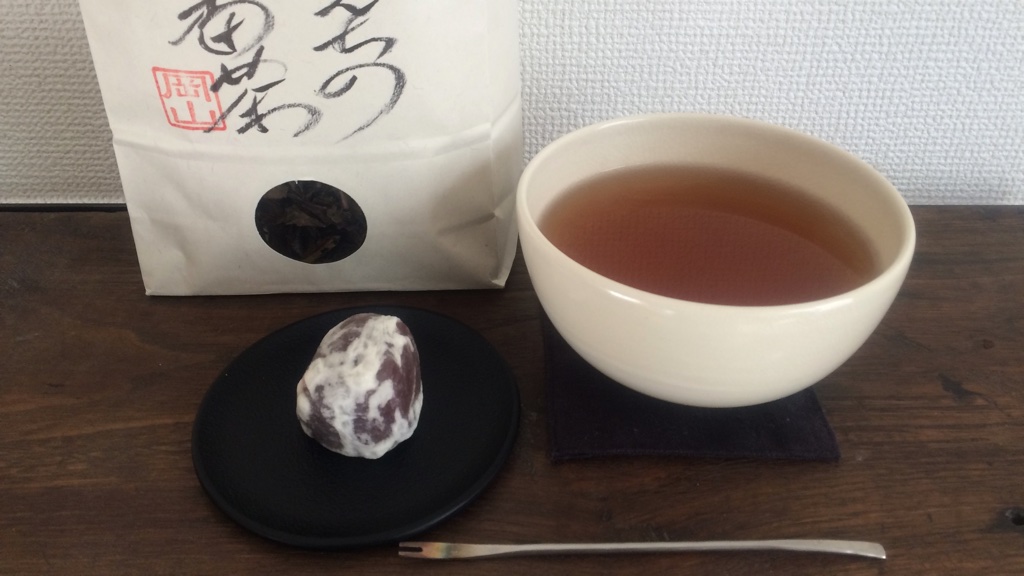April 2017 – Hōji Bancha from Okayama
This month we selected a Hōji Bancha (ほうじ番茶) from Mimasaka (美作) in the prefecture of Okayama (岡山).

Hōji Bancha
Hōji Bancha (ほうじ番茶) from Mimasaka is a tea prepared while keeping the original shape of the tea leaves. We already presented another Bancha: Kyōbancha from Kyōto in October 2016. Tea leaves harvested in October that stored the nutrient elements inside since the summer, are steamed and sent in the drying machines.
The difference with Sencha is in the drying machine. For Sencha it turns tea leaves to be twisted with hot wind and we obtain needlelike tea leaves. However, for Bancha, this process is not used and the leaves simply go through hot wind. Then we sort the tea leaves and twigs and the latter are dried again in the sun before being mixed together with the tea leaves again. At this step, the tea is simply called “Bancha (番茶)”. At the moment of delivery, we roast the tea leaves with the twigs in order to capture the scent. With the addition of this “roasting (ほうじる)” process, the tea is called “Hōji Bancha”, literally roasted Bancha. Hōji Bancha has little caffeine and bitterness, but it has an agreeable sweetness and roundness.
This tea was introduced in this region in the middle of the Edo period (around 17th century). Miyamoto Musashi (宮本武蔵), born in this country during the Edo period, and a great master of Japanese martial arts, loved this tea. He is famous for 60 victories in battle without a single defeat in his life. He was not only a warrior, but also a painter and writer. He is always popular as a multitalented artist and he is loved by everyone in Japan.
Collaboration in Jeans production
Do you have jeans? For you, does the image of jeans refers to America? Did you know Japanese make denim jeans? For a few years now denim jeans made in Japan, especially in the prefecture of Okayama, attracts attention in the denim jeans market, among jeans lovers. During the Edo period, the cotton started to be produced and the indigo dyeing industry in textile brought prosperity to the country. Eventually these 2 industries fused and made Okayama’s denim jeans. And now, Qualitea Mimasaka (the producer of this Hōji Bancha), has started to work with a big denim jeans company in the district to develop a new style of jeans. We use tea leaves in order to dye the cloth, or to make weathered jeans.
Brewing Hōji Bancha
The amount of tea leaves should be adapted according to the desired taste: it should be around 3 heaping teaspoons (5 grams) of Hōji Bancha for 140ml (5oz) of spring water. The first infusion should last about 30 seconds in boiling water. We recommend you to use a lot of tea leaves pour the infusion. We can also make Hōji Bancha Latte (see the blogpost of March 2016). And again, please put a lot of tea leaves to make a good Hōji Bancha Latte. Even if you put many tea leaves, the tea will not turn bitter.
For cold Hōji Bancha, prepare 1 liter of water and one sachet of Hōji Bancha (we repeat it, do not hold when adding the leaves), then put them all in a pitcher in the refrigerator during 2 to 6 hours according to your taste.
If you have questions about Japanese teas, please do not hesitate to contact us!
